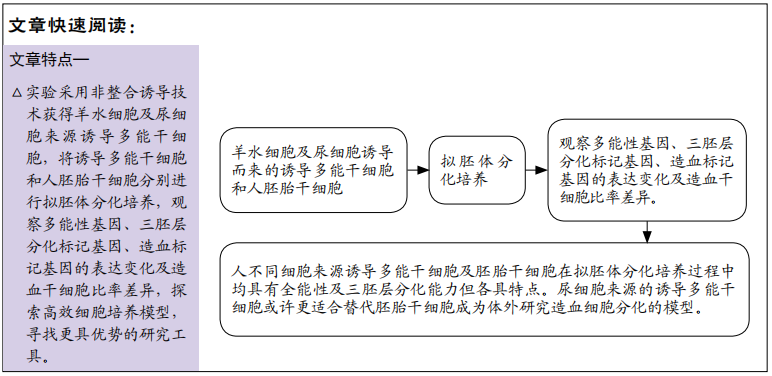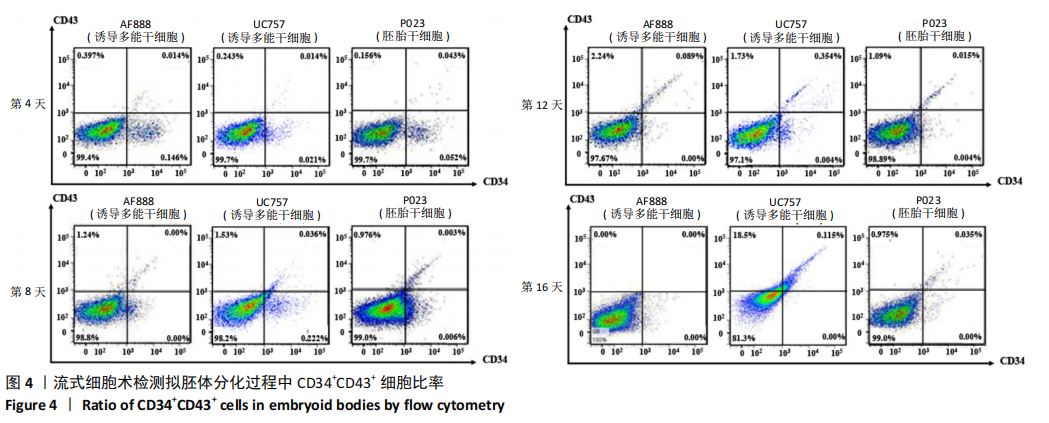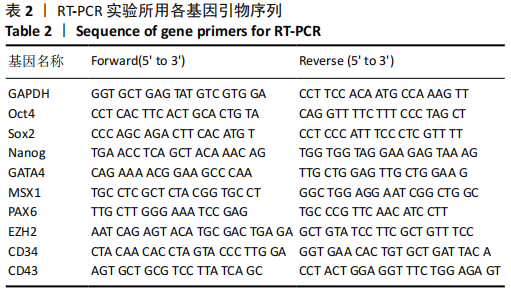[1] POTTEN CS, LOEFFLER M. Stem cells: attributes, cycles, spirals, pitfalls and uncertainties. Lessons for and from the crypt. Development. 1990; 110(4):1001-1020.
[2] THOMSON JA, ITSKOVITZ-ELDOR J, SHAPIRO SS, et al. Embryonic stem cell lines derived from human blastocysts. Science. 1998;282(5391):1145-1147.
[3] TAKAHASHI K, YAMANAKA S. Induction of pluripotent stem cells from mouse embryonic and adult fibroblast cultures by defined factors. Cell. 2006;126(4):663-676.
[4] ANOKYE-DANSO F, TRIVEDI CM, JUHR D, et al. Highly efficient miRNA-mediated reprogramming of mouse and human somatic cells to pluripotency. Cell Stem Cell. 2011;8(4):376-388.
[5] SUBRAMANYAM D, LAMOUILLE S, JUDSON RL, et al. Multiple targets of miR-302 and miR-372 promote reprogramming of human fibroblasts to induced pluripotent stem cells. Nat Biotechnol. 2011;29(5):443-448.
[6] LEE HK, MORIN P, XIA W. Peripheral blood mononuclear cell-converted induced pluripotent stem cells (iPSCs) from an early onset Alzheimer’s patient. Stem Cell Res. 2016;16(2):213-215.
[7] MURARO MJ, KEMPE H, VERSCHURE PJ. Concise review: the dynamics of induced pluripotency and its behavior captured in gene network motifs. Stem Cells. 2013;31(5):838-848.
[8] CHIN MH, MASON MJ, XIE W, et al. Induced pluripotent stem cells and embryonic stem cells are distinguished by gene expression signatures. Cell Stem Cell. 2009;5(1):111-123.
[9] BANERJEE K, JANA T, GHOSH Z, et al. PSCRIdb: A database of regulatory interactions and networks of pluripotent stem cell lines. J Biosci. 2020;45:53.
[10] NAKAMURA S, TAKAYAMA N, HIRATA S, et al. Expandable megakaryocyte cell lines enable clinically applicable generation of platelets from human induced pluripotent stem cells. Cell Stem Cell. 2014;14(4):535-548.
[11] SUGIMOTO N, ETO K. Reconstitution of the hematopoietic system and clinical applications of iPS cells. Rinsho Ketsueki. 2019;60(9):1046-1055.
[12] TEN BERGE D, KOOLE W, FUERER C, et al. Wnt signaling mediates self-organization and axis formation in embryoid bodies. Cell Stem Cell. 2008; 3(5):508-518.
[13] MENG Y, LIU Y, DAKOU E, et al. Polycomb group RING finger protein 5 influences several developmental signaling pathways during the in vitro differentiation of mouse embryonic stem cells. Dev Growth Differ. 2020; 62(4):232-242.
[14] BRICKMAN JM, SERUP P. Properties of embryoid bodies. Wiley Interdiscip Rev Dev Biol. 2017;6(2):10-21.
[15] WANG C, FALOON PW, TAN Z, et al. Mouse lysocardiolipin acyltransferase controls the development of hematopoietic and endothelial lineages during in vitro embryonic stem-cell differentiation. Blood. 2007;110(10):3601-3609.
[16] LI Y, MAO X, ZHOU X, et al. An optimized method for neuronal differentiation of embryonic stem cells in vitro. J Neurosci Methods. 2020;330:108486.
[17] ZHAO Z, MA Y, CHEN Z, et al. Effects of Feeder Cells on Dopaminergic Differentiation of Human Embryonic Stem Cells. Front Cell Neurosci. 2016; 10:291.
[18] ZHAO X, LI Q, JIANG WM, et al. Expression level of pluripotent genes in incomplete reprogramming. Asian Pac J Trop Med. 2014;7(8):639-644.
[19] CHOI J, LEE S, MALLARD W, et al. A comparison of genetically matched cell lines reveals the equivalence of human iPSCs and ESCs. Nat Biotechnol. 2015;33(11):1173-1181.
[20] YOSHIMATSU S, NAKAMURA M, NAKAJIMA M, et al. Evaluating the efficacy of small molecules for neural differentiation of common marmoset ESCs and iPSCs. Neurosci Res. 2020;155:1-11.
[21] ABUTALEB NO, TRUSKEY GA. Human iPSCs Stretch to Improve Tissue-Engineered Vascular Grafts. Cell Stem Cell. 2020;26(2):136-137.
[22] VATINE GD, BARRILE R, WORKMAN MJ, et al. Human iPSC-Derived Blood-Brain Barrier Chips Enable Disease Modeling and Personalized Medicine Applications. Cell Stem Cell. 2019;24(6):995-1005.e6.
[23] OHSHIMA M, KAMEI S, FUSHIMI H, et al. Prediction of Drug Permeability Using In Vitro Blood-Brain Barrier Models with Human Induced Pluripotent Stem Cell-Derived Brain Microvascular Endothelial Cells. Biores Open Access. 2019;8(1):200-209.
[24] STADTFELD M, APOSTOLOU E, AKUTSU H, et al. Aberrant silencing of imprinted genes on chromosome 12qF1 in mouse induced pluripotent stem cells. Nature. 2010;465(7295):175-181.
[25] ADAMI R, BOTTAI D. Spinal Muscular Atrophy Modeling and Treatment Advances by Induced Pluripotent Stem Cells Studies. Stem Cell Rev Rep. 2019;15(6):795-813.
[26] KARAGIANNIS P, TAKAHASHI K, SAITO M, et al. Induced Pluripotent Stem Cells and Their Use in Human Models of Disease and Development. Physiol Rev. 2019;99(1):79-114.
[27] ROWE RG, DALEY GQ. Induced pluripotent stem cells in disease modelling and drug discovery. Nat Rev Genet. 2019;20(7):377-388.
[28] FIELDS M, CAI H, GONG J, et al. Potential of Induced Pluripotent Stem Cells (iPSCs) for Treating Age-Related Macular Degeneration (AMD). Cells. 2016;5(4):44.
[29] FAN Y, WINANTO, NG SY. Replacing what’s lost: a new era of stem cell therapy for Parkinson’s disease. Transl Neurodegener. 2020;9:2.
[30] HANSEN M, VON LINDERN M, VAN DEN AKKER E, et al. Human-induced pluripotent stem cell-derived blood products: state of the art and future directions. FEBS Lett. 2019;593(23):3288-3303.
[31] SUGIMOTO N, ETO K. Platelet production from induced pluripotent stem cells. J Thromb Haemost. 2017;15(9):1717-1727.
[32] SUZUKI D, FLAHOU C, YOSHIKAWA N, et al. iPSC-Derived Platelets Depleted of HLA Class I Are Inert to Anti-HLA Class I and Natural Killer Cell Immunity. Stem Cell Reports. 2020;14(1):49-59.
[33] MEKCHAY P, INGRUNGRUANGLERT P, SUPHAPEETIPORN K, et al. Study of Bernard-Soulier Syndrome Megakaryocytes and Platelets Using Patient-Derived Induced Pluripotent Stem Cells. Thromb Haemost. 2019; 119(9):1461-1470.
|






